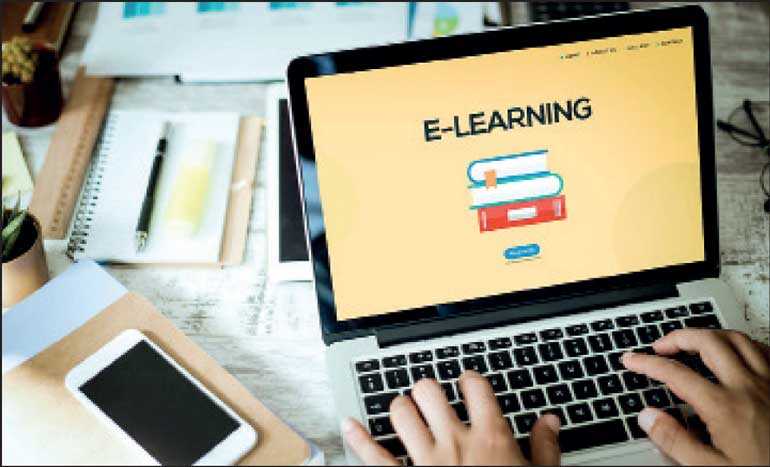Saturday Jan 03, 2026
Saturday Jan 03, 2026
Friday, 15 May 2020 00:00 - - {{hitsCtrl.values.hits}}

By Dr. Tara de Mel
With the sudden closure of schools on 12 March, the Sri Lankan education system plunged into a crisis. Overnight teachers had to gear themselves for online teaching and other methods of distance education.
Meanwhile many countries in the West and East seamlessly switched to e-learning and online education, since their curricula and syllabuses were already posted on the education websites, and e-learning had been practiced interspersed with face-to-face learning in class, even before COVID-19.
A good example is Singapore, where once a week, e-learning had been a practice for several grades. So, an abrupt and total switch was effortless.
What’s the story with Sri Lanka?
We had a smattering of syllabuses on the National Education of Education website, but they were not available in an organised manner. Besides, internet penetration, PC and laptop usage is still less than 40%, so accessing education material through e-learning has always been very challenging. Whilst pockets of socially more advantaged students were able to access content and material through using the internet, the bulk of the students were left high and dry.
Yet, distance learning through other methods could have been made possible: for instance, using radio, TV, telephone and postal services in innovative and creative methods. These could have started in early March, no sooner the danger of COVID-19 became visible and some countries had already closed schools.
The Ministry of Education started telecasting lessons for O’Level, A’Level and Grade 5 students. Not the others. Some schools were selected for the Microsoft Google-classroom programs, but again that’s a small number. A significant number of teachers started using WhatsApp/Viber to send bulk lesson-plans in PDF.
But those social media applications are not meant for education tutorials!
In all these scenarios, it was entirely a continuation of teacher-centred education, where students are spoon-fed. There was no opportunity for students to learn on their own, and to creatively put their minds to work.
In the long run however, it is imperative to increase possibilities for self-e-learning. COVID-19 I feel is a blessing in disguise to re-think how educational material and content can be made available for self-learning under any circumstance.
Floods, rains, and other natural disasters often cause school closure. In fact, the teacher-centred, exam-driven, spoon-feeding that goes on in class needs to be replaced, and fast.
The prevailing system only shrinks minds, and doesn’t allow their expansion. It promotes rote learning and regurgitation of facts. It doesn’t make way for analysis, problem solving and creative decision making.
Our students are bright and yes, we boast of a high literacy. But never do we use that foundation to make our kids world-class.
In the Northern Province, with sparse internet penetration and in the resource-poor 12 education zones, a simple start-up like Yarl IT Hub (http://www.yarlithub.org)has taken education and entrepreneurship to hundreds of students through technology. And the experience from Western countries like Estonia (http://ncee.org/2020/04/a-step-ahead-estonia/), is worth reading by policymakers and those in authority.